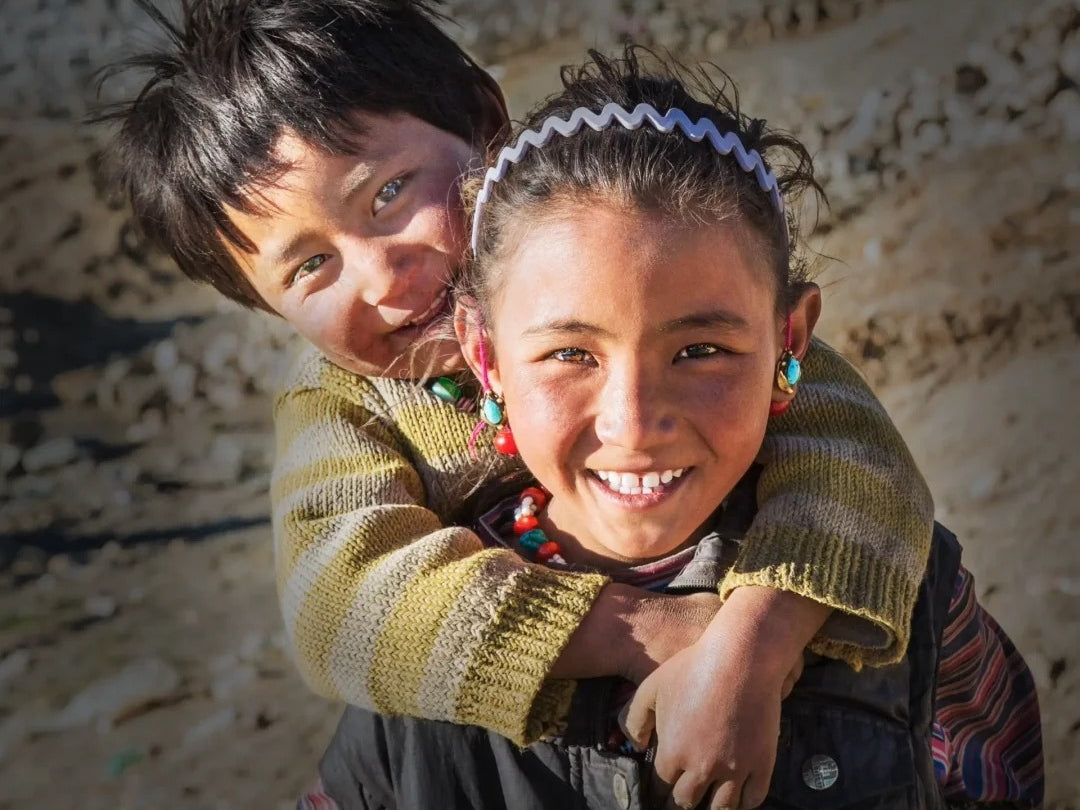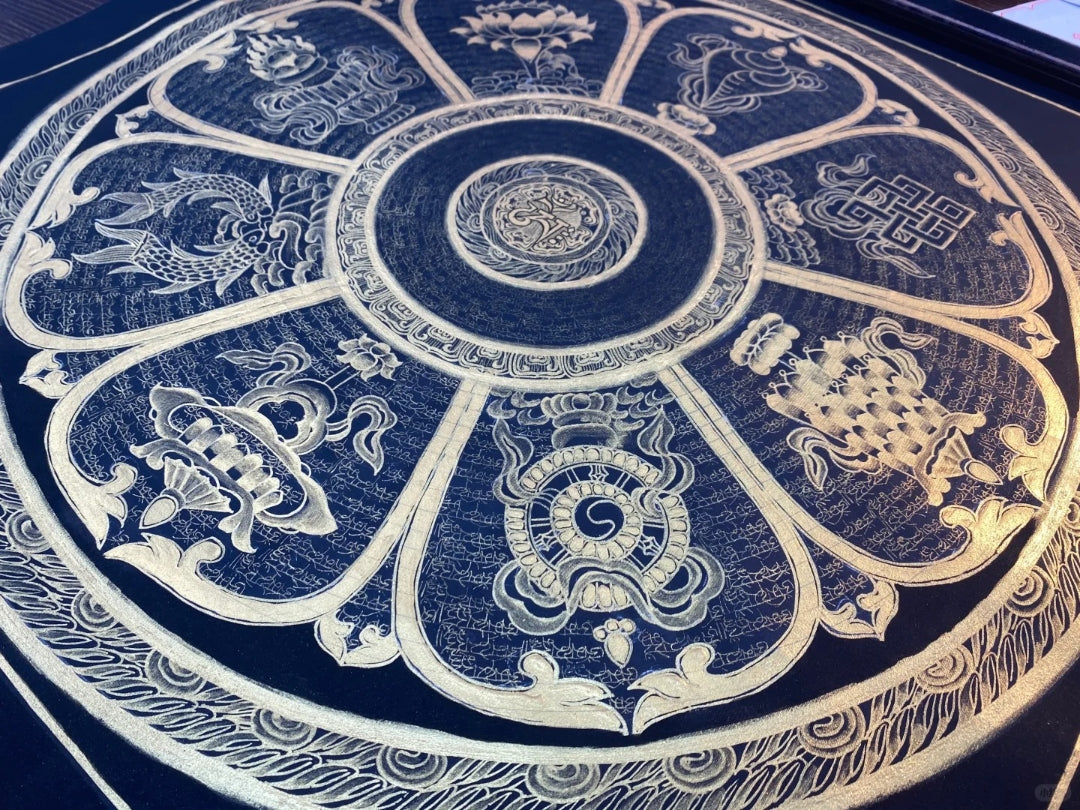Tibetan motifs—Thangka deities, Ashtamangala symbols, mandala borders, script syllables—have long held deep spiritual, ritual, and cultural significance. Over time, these motifs have moved beyond monastery walls and festival flags into designer catwalks, streetwear brands, and everyday accessories. In this piece, we explore how these designs travel from ritual roots to fashion statements, where interpretation becomes appropriation, and how both artists and consumers can encourage ethical crossover.

Ritual Roots: Origins of Tibetan Motifs
Many motifs used in Tibetan art are devotional and symbolic. Thangkas depict deities, Buddha forms, protectors, and bodhisattvas; temple decorations frequently include the Ashtamangala—the Eight Auspicious Symbols—as reminders of purification, protection, and virtue. Script mantras, lotus flowers, mandalas, and vajra symbols all have lineage, technique, and ritual context. Understanding these origins helps distinguish soul from style.
Artisan Reinterpretation: How Styles Evolve
1. Local Workshops Adapting to Demand
In Himalayan artisan communities, motifs are reinterpreted through functional jewelry—pendants, amulets, prayer bead bracelets. Designs are simplified (for example, mandala outlines rather than full deity scenes) to maintain readability in small pieces. Materials may shift: enamel instead of hand-painted Thangka pigments, modern alloys instead of heavy ritual metals. But many workshops keep the core proportions and iconographic rules intact.
2. Designers & Fashion Brands Borrowing Symbolism
Labels and artists outside Tibet have increasingly incorporated mandala seams, deity prints, or script mantras into fashion collections. T-shirts, jackets, sneakers, and handbags sometimes feature visually striking Tibetan decorative elements. Some collaborations with Himalayan artisans pay royalties or co-credit makers; others use the motifs largely for aesthetics, without context.
Responsible Adaptation vs. Superficial Trend
Here’s how to tell the difference and how to engage well:
| Adaptation | What’s Respectful | What to Avoid |
|---|---|---|
| Credits and Collaboration | Designs that name the maker/distributor, involve artisan partners, share revenue, or preserve craft methods. | Designs that pull images without acknowledging where they came from or who made them. |
| Preserving Symbol Integrity | Keeping proportions, ensuring script is legible and correct, avoiding misuse of sacred imagery. | Distorting deities, using them in disrespectful contexts (bathwear, interior decor with no awareness, etc.). |
| Sustainable Material Use | Using ethically sourced metals and stones, natural pigments, or at least safe enamel; fair labor practices. | Cheap mass-produced knock-offs with toxic finishes or unfair wages. |
Noteworthy Designers & Examples
-
Designers who partner with Himalayan workshops to bring hand-painted Thangka style to modern pendants.
-
Brands that use mandala or Ashtamangala motifs on textiles but include explanatory hang tags or product cards about what the symbol represents.
-
Emerging fashion lines where Tibetan motifs inform whole capsule collections (prints, trims, accessories) with part of proceeds supporting local artisan communities.
How Fashion Consumers Can Participate Ethically
-
Ask questions: Who made this? Where is the design from? Was it blessed or made with intention?
-
Buy small and intentional: A single well-made piece that respects context is better than many fast fashion items.
-
Care for symbolic pieces: Preserving paint, metal, script means respecting their original meaning.
-
Share the stories: If you wear something with Tibetan symbolism, let others know what it means—not just “looks cool”—to build awareness and respect.
Fashion as Living Continuity
When done well, the trend of Tibetan motifs in fashion is not just appropriation—it’s a channel for cultural exchange, preservation, and reinvention. The motifs carry millions of years of visual tradition, and every respectful adaptation helps keep those traditions alive in a changing world.
Fashion need not erode meaning. It can amplify it: helping motifs move from festival flags and temple corners into daily life, without losing their depth.





